Extreme Heat
In most of the United States, extreme heat is a long period (2 to 3 days) of high heat and humidity with temperatures above 90 degrees. While Montana has less extreme heat threats than most states, we average roughly five days per year of dangerous heat events which can lead to heat related illnesses and even death to vulnerable populations.
The following groups are particularly vulnerable to heat; check in with friends and relatives who fall in one of these populations, especially if they don’t have air conditioning:
- Young children and infants are particularly vulnerable to heat-related illness and death, as their bodies are less able to adapt to heat than are adults.
- Older adults, particularly those with pre existing diseases, take certain medications, are living alone or with limited mobility who are exposed to extreme heat can experience multiple adverse effects.
- People with chronic medical conditions are more likely to have a serious health problem during a heat wave than healthy people.
- Pregnant women are also at higher risk. Extreme heat events have been associated with adverse birth outcomes such as low birth weight, preterm birth, and infant mortality, as well as congenital cataracts.
It is NEVER safe to leave a child, disabled person or pet locked in a car, even in the winter. If you have a toddler in your household, lock your cars, even in your own driveway. Kids play in cars or wander outside and get into a car and can die in 10 minutes!
Following are things you can do before an extreme heat event:
Find places in your community where you can go to get cool.
Try to keep your home cool:
• Cover windows with drapes or shades.
• Weather-strip doors and windows.
• Use window reflectors such as aluminum foil-covered cardboard to reflect heat back outside.
• Add insulation to keep the heat out.
• Use a powered attic ventilator, or attic fan, to regulate the heat level of a building’s attic by clearing hot air.
• Install window air conditioners and insulate around them.
Learn to recognize the signs of heat illness.
Here are tips for staying safe during an extreme heat event:
- Never leave a child, adult, or animal alone inside a vehicle on a warm day.
- Find places with air conditioning.
- Libraries, shopping malls, and community centers can provide a cool place to take a break from the heat.
- If you’re outside, find shade. Wear a hat wide enough to protect your face.
- Wear loose, lightweight, light colored clothing.
- Drink plenty of fluids to stay hydrated. If you or someone you care for is on a special diet, ask a doctor what would be best.
- Do not use electric fans when the temperature outside is more than 95 degrees. You could increase the risk of heat-related illness. Fans create air flow and a false sense of comfort, but do not reduce body temperature.
- Avoid high-energy activities.
- Check yourself, family members, and neighbors for signs of heat-related illness.
Know the signs and ways to treat heat-related illness.
Heat Cramps
• Signs: Muscle pains or spasms in the stomach, arms, or legs.
• Actions:
Go to a cooler location.
Remove excess clothing.
Take sips of cool sports drinks with salt and sugar.
Get medical help if cramps last more than an hour.
Heat Exhaustion
• Signs: Heavy sweating, paleness, muscle cramps, tiredness,
weakness, dizziness, headache, nausea or vomiting, and fainting.
• Actions:
Go to an air-conditioned place and lie down.
Loosen or remove clothing.
Take a cool bath.
Take sips of cool sports drinks with salt and sugar.
Get medical help if symptoms get worse or last more than an hour.
Heat Stroke
• Signs: Extremely high body temperature (above 103
degrees) indicated by an oral thermometer; red, hot, and dry skin with no sweat; rapid, strong pulse; dizziness; confusion; and unconsciousness.
• Actions:
Call 9-1-1 or get the person to a hospital immediately.
Cool down with whatever methods are available until medical help arrives.
Additional Resources
Heat Stress and Other Heat Related Illnesses (mt.gov)
County or Tribal Health Departments (mt.gov)
Extreme Heat Safety - SafeMT.com
TakeTheSizzleOut Safety Sheet.pdf
Montana DES, DNRC, DEQ, DPHHS, MDT, and Department of Commerce post health and safety information, situation updates, and travel information on their Facebook accounts. Follow these state agencies on social media for current updates on conditions.
Extreme Heat | Emergency Notifications (fema.gov)
Extreme Heat | Special Conditions/Locations (Animals) (fema.gov)
Extreme Heat | Outdoors (Sunburn) (fema.gov)
Heat Safety Tips and Resources (weather.gov)
Heat Index Calculation (noaa.gov)
NHTSA | National Highway Traffic Safety Administration-Hot Cars
HEAT.gov - National Integrated Heat Health Information System
Extreme Heat | Natural Disasters and Severe Weather | CDC

